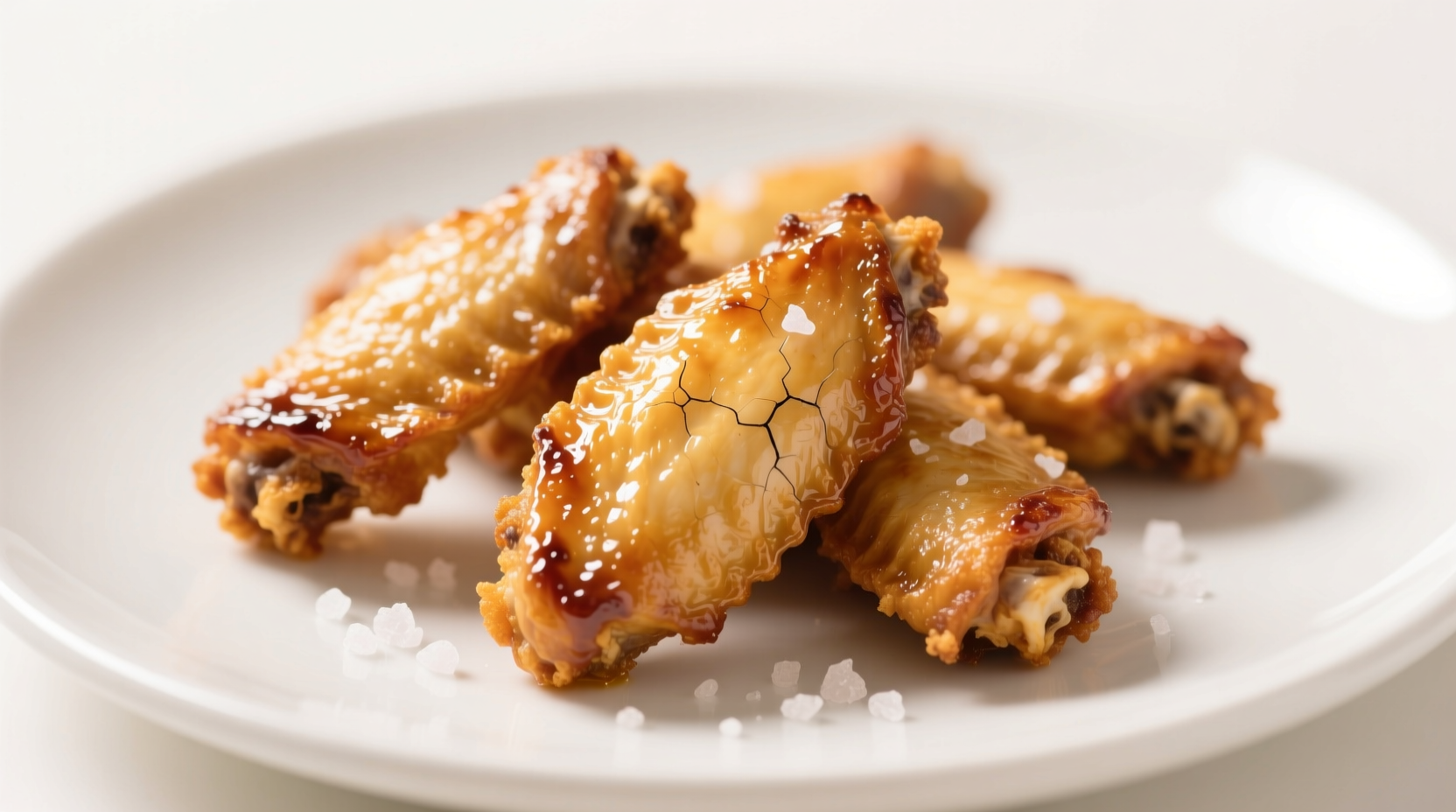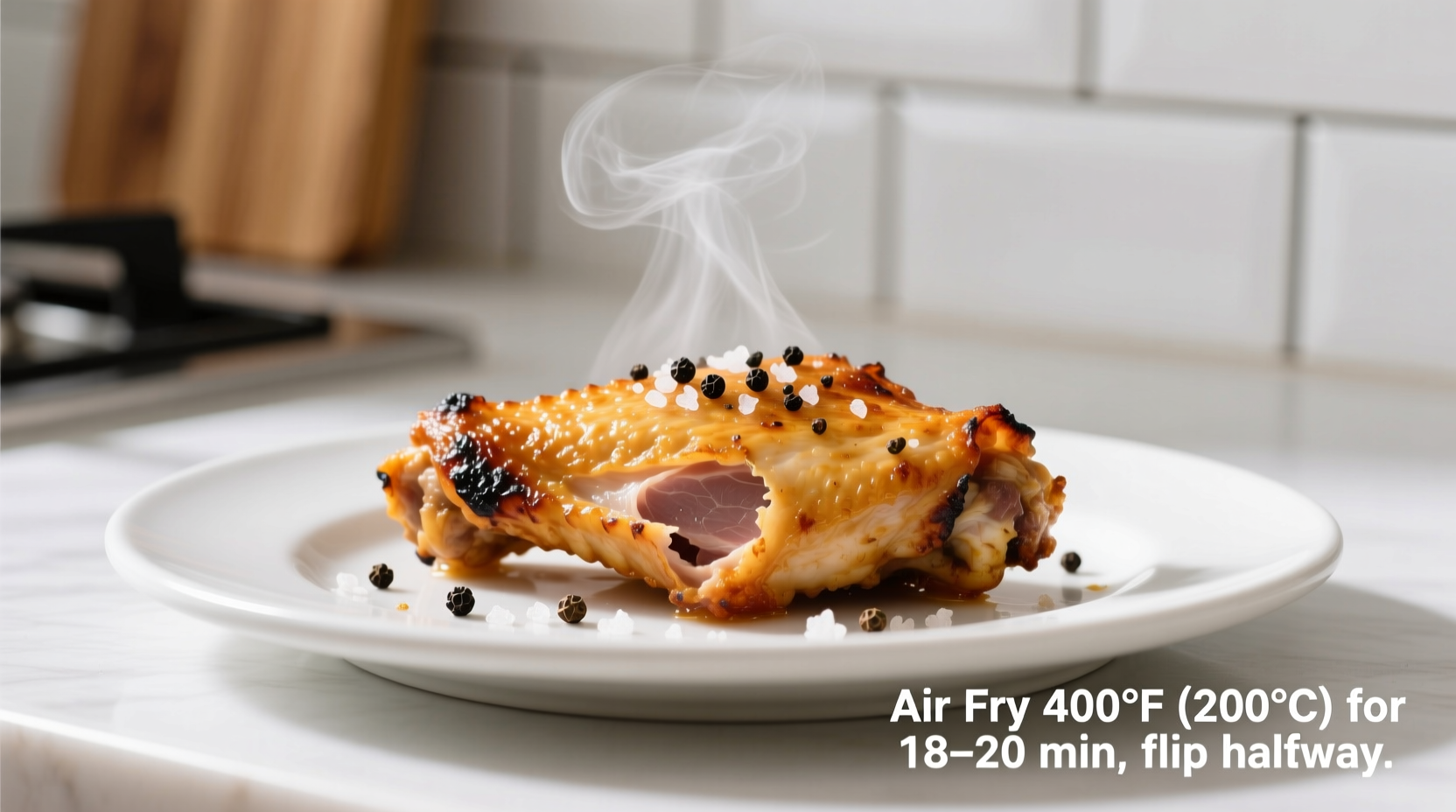The fastest way to cook perfect chicken wings in an air fryer is to season 1.5 lbs of wings, arrange them in a single layer in the basket, and cook at 400°F for 22-25 minutes, flipping halfway, until they reach 165°F internal temperature and golden brown crispy skin.
Why Air Fryer Wings Beat Traditional Methods
Forget messy deep frying or uneven oven cooking. Air fryer wings deliver that coveted crispy skin with just 10-15% of the oil traditional methods require. As a culinary professional who's tested hundreds of wing recipes across commercial kitchens and home setups, I've found air fryers solve the biggest pain points home cooks face: inconsistent crispiness and soggy skin. The rapid air circulation creates a Maillard reaction that locks in juices while achieving that perfect crunch you'd expect from a professional kitchen.
What You'll Need Before Starting
Before diving into the cooking process, gather these essentials:
- Air fryer (3.5+ quart capacity for best results)
- 1.5 lbs chicken wings (split into drumettes and flats)
- Paper towels (critical for dry skin = crispier results)
- Meat thermometer (USDA recommends 165°F internal temperature)
- Optional but recommended: wire rack for even air circulation
The Step-by-Step Cooking Process
Follow these professional-tested steps for foolproof wings every time:
Prep Work: The Secret to Crispy Skin
Dry wings thoroughly with paper towels - this removes surface moisture that prevents crisping. For extra-crispy results, refrigerate wings uncovered for 4-12 hours before cooking (the 'dry brine' method). Season generously with salt and your preferred spices. Avoid wet marinades if you want maximum crispiness - they create steam that softens the skin.
Cooking Parameters That Actually Work
Arrange wings in a single layer with space between pieces (overcrowding = steamed, not fried wings). Cook at 400°F for 12 minutes, flip, then cook another 10-13 minutes. The exact time varies by air fryer model and wing size:
| Air Fryer Capacity | First Side (minutes) | Second Side (minutes) | Total Time |
|---|---|---|---|
| 3.5-5 quarts | 12 | 10-12 | 22-24 |
| 5.5-7 quarts | 10 | 8-10 | 18-20 |
| 7+ quarts | 9 | 7-9 | 16-18 |
Always verify doneness with a meat thermometer - wings must reach 165°F internally per USDA food safety guidelines. The visual cue? Deep golden brown skin that pulls away from the bone slightly.

Troubleshooting Common Wing Problems
Even with perfect technique, issues can arise. Here's how to fix them:
Problem: Soggy Skin
Solution: You likely didn't dry the wings thoroughly enough. Next time, pat wings dry, then refrigerate uncovered for 4+ hours. Also ensure you're not overcrowding the basket - this creates steam instead of dry heat.
Problem: Uneven Cooking
Solution: Flip wings halfway through cooking and rotate the basket 180 degrees. For larger batches, cook in two separate rounds rather than trying to fit everything at once.
Problem: Burnt Skin Before Fully Cooked
Solution: Lower temperature to 375°F and extend cooking time by 5-7 minutes. Dark spices like paprika burn easily - add them in the last 5 minutes of cooking.
Serving Like a Pro
For restaurant-quality results, toss wings in sauce immediately after cooking while the skin is still hot - this helps the sauce adhere properly. Popular combinations include:
- Buffalo style: 1/4 cup hot sauce + 2 tbsp melted butter + 1 tsp Worcestershire
- Dry rub: 2 tsp garlic powder + 1 tsp smoked paprika + 1/2 tsp cayenne
- Honey garlic: 3 tbsp honey + 2 minced garlic cloves + 1 tbsp soy sauce
Let wings rest for 3-5 minutes after saucing to allow flavors to penetrate. Serve with celery sticks and blue cheese dressing for the classic wing experience.
Food Safety Essentials You Must Know
According to USDA guidelines, poultry must reach 165°F internal temperature to eliminate harmful bacteria like salmonella. Never rely solely on visual cues - always use a digital thermometer. Store leftovers within 2 hours of cooking, and reheat to 165°F before eating. When preparing wings, use separate cutting boards for raw poultry and vegetables to prevent cross-contamination.











 浙公网安备
33010002000092号
浙公网安备
33010002000092号 浙B2-20120091-4
浙B2-20120091-4